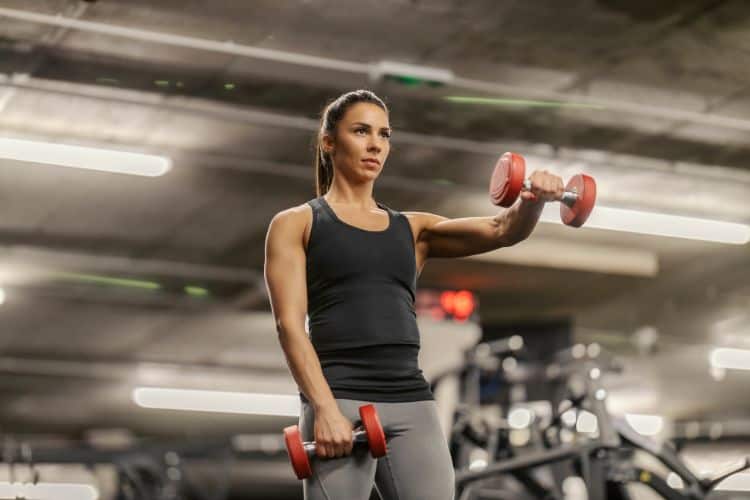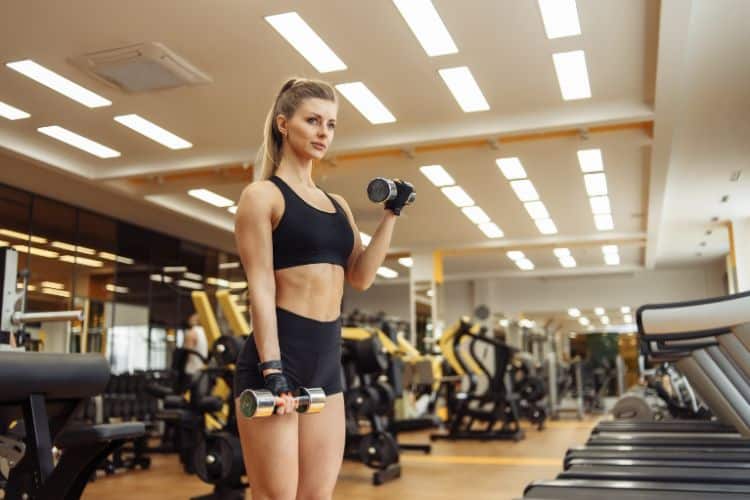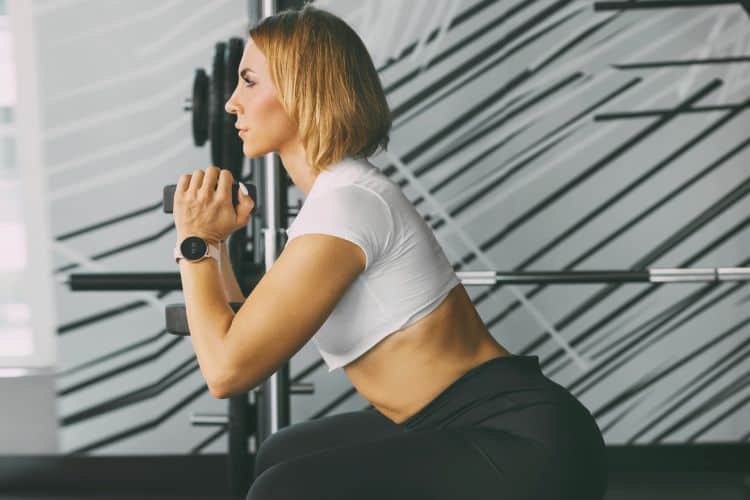Sign up for workout ideas, training advice, reviews of the latest gear and more.






High-Intensity Interval Training (HIIT) remains one of the most effective workout styles for burning fat, building lean muscle, and improving cardiovascular fitness in a short amount of time. And when you expand that training session into a full 45 minutes, you create the perfect environment for calorie torching, full-body strength development, and metabolic boosting that continues long after the workout ends. This 45-minute full body HIIT workout is designed for all fitness levels, can be done at home or in the gym, and requires minimal equipment. Whether you’re working out to improve endurance, get stronger, lose weight, or simply tone up, this routine provides everything you need for a complete, challenging, and energizing sweat session.
This guide breaks down the workout step-by-step, explains the benefits, offers form tips, and helps you customize the routine to fit your goals. By the end, you’ll have a clear, effective HIIT plan you can return to anytime you want a powerful, fast-paced full-body fitness boost.
A 45-minute HIIT session hits the sweet spot between intensity and duration. Shorter HIIT workouts are great for quick bursts of effort, but longer 45-minute sessions allow you to include strength, cardio, core, and conditioning work all in one. This creates a well-rounded session that increases calorie burn, challenges all muscle groups, and builds full-body endurance.
A longer HIIT session also increases EPOC (Excess Post-Exercise Oxygen Consumption)—the afterburn effect. This means your body continues burning calories for hours after your workout because it must work harder to recover, restore oxygen levels, and rebuild muscles.
Most importantly, this length of session provides enough time to incorporate multiple circuits with different focuses—strength, cardio, power, and core—to maximize results.
HIIT alternates between high-intensity intervals and short rest periods, which increases your heart rate, keeps you moving, and maximizes calorie burn. Compared to regular steady-state cardio, HIIT burns more calories both during and after the workout.
By incorporating bodyweight or weighted strength exercises, this routine helps develop muscle tone, boost metabolism, and improve definition in your arms, legs, core, back, and shoulders.
The elevated heart rate during HIIT strengthens your heart and improves oxygen efficiency. Over time, this builds cardiovascular endurance, making everyday activities easier.
HIIT increases your metabolic rate long after you finish working out. This helps your body stay in fat-burning mode even at rest.
You get strength training, cardio, and core all in one session—meaning you don’t need multiple workouts to achieve a full-body training day.
This workout is broken into five circuits, each targeting a different part of the body. You’ll complete each exercise for 40 seconds of work, followed by 20 seconds of rest before moving to the next exercise. After each circuit, rest for 1 minute before starting the next one.
If you’re a beginner, reduce intervals to 30 seconds on / 30 seconds off.
If you’re advanced, increase intervals to 45 seconds on / 15 seconds off.
Warming up prepares your muscles, elevates your heart rate, and reduces injury risk. Spend about one minute on each movement:
This should feel easy to moderate—just enough to activate your muscles and raise your temperature.
Jump squats fire up your legs, glutes, and core while boosting heart rate.
Keep chest lifted, drive through heels, and land softly to protect the joints.
Reverse lunges strengthen your quads, glutes, and hamstrings while improving stability.
Focus on long steps back, upright posture, and controlled movement.
Great for firing up the glutes and outer thighs.
Keep knees soft, hips low, and take slow, controlled steps to each side.
This variation targets inner thighs and glutes.
Push knees outward, engage your core, and pulse gently to feel the burn.
Whether on toes or knees, push-ups strengthen the chest, shoulders, triceps, and core.
Keep your spine neutral and lower with control.
This targets the back of the arms.
Keep elbows tight and lower your body just a few inches if you’re a beginner.
Great for core, shoulders, and stability.
Avoid rocking your hips—move slowly and stay controlled.
Works the chest, triceps, shoulders, and core.
Move between low plank and high plank, keeping hips square.
This full-body move builds endurance, strength, and explosive power.
Modify by stepping back instead of jumping if needed.
Targets core, arms, and legs while raising your heart rate.
Keep your hips low and pump your knees quickly.
Drive your knees up high while pumping your arms for maximum calorie burn.
Jump your feet out and in while holding a strong plank.
This targets your core and adds a cardio challenge.
Strengthens the legs while engaging your core with each kick.
Kick forward with control and maintain a strong, upright torso.
This move builds full-body strength—from shoulders to hamstrings.
Walk your hands out slowly, perform the push-up, and return.
Targets inner thighs, outer thighs, and glutes.
Take wide steps and sit into your hip as you lunge sideways.
Works the entire core, shoulders, and quads.
Take small controlled steps while keeping your knees low to the ground.
Target the obliques and upper abs.
Move slowly for maximum muscle engagement.
Strengthens lower abs and hip flexors.
Keep your lower back pressed into the floor.
Rotate your torso side to side while engaging your core.
Add a water bottle for extra resistance.
End with a strong plank for full-core activation.
Focus on long, controlled breathing.
After an intense workout, allow your body to gradually lower its heart rate. A proper cooldown improves recovery and reduces soreness.
Cool down with:
Hold each stretch for 20–30 seconds.
The best results come from performing HIIT workouts 3–5 times per week. Consistency builds stamina, strength, and endurance over time.
High intensity doesn’t mean sloppy form. Move with control to prevent injuries and ensure you’re activating the correct muscles.
Beginners should start slowly and modify movements like burpees, lunges, and push-ups until they gain strength and confidence.
Eat a balanced meal with carbs and protein before working out. After your session, refuel with protein to support muscle repair.
HIIT training makes you sweat—a lot. Drink water before, during, and after your workout.
Most people benefit from 2–4 full-body HIIT workouts per week. Beginners may start with 1–2 sessions, while advanced athletes can increase the frequency. Always allow recovery days to avoid overtraining and support muscle growth.
This workout is designed for:
Its flexible format allows you to scale intensity up or down as needed.
Fat loss requires a combination of calorie burn, increased metabolism, and muscle development—this HIIT session checks all those boxes. HIIT creates metabolic stress, builds lean muscle, and triggers EPOC, which increases total daily calorie expenditure. Combined with a healthy diet, this type of workout is one of the most effective methods for reducing body fat and sculpting a lean physique.
This 45-minute full body HIIT workout combines strength, cardio, endurance, and core work into one powerful session that pushes your limits and delivers real results. Whether you’re training for fat loss, muscle tone, or overall fitness, this routine helps you build strength, boost metabolism, and burn calories long after you finish. With no equipment needed and simple, effective exercises, it’s easy to do at home or in the gym. Stick with it consistently, push yourself through each interval, and celebrate the noticeable fitness improvements you’ll see over time.
Looking to round out your training plan after tackling the 45-minute full body HIIT workout? You might want to check out our detailed guide on the 45-Minute Leg Day Workout for Serious Strength and Growth for a lower-body focused session, then balance with the 45-Minute Full Body Calisthenics Circuit: A No-Equipment Workout when you’re travelling or don’t have gear. For arm‐day variation, head to the Your Ultimate 30-Minute HIIT Arm Workout to sharpen tonic strength in less time, and for pure upper-body beginners the Best 45-Minute Upper Body Workout for Beginners offers a great starting point. Finally, if you’re ready to add some weight training, try the 45-Minute Full Body Kettlebell HIIT Workout to bring explosiveness and resistance into your routine.
Stay up to date on the latest women’s health, fitness and lifestyle trends and tips.